Here are the 5 jellyfish common in RI waters and which ones to watch out for while swimming
For more than 500 million years – well before dinosaurs ever thought of existing – jellyfish have floated through the world’s oceans.
Today, 2,000 species of jellyfish have been discovered around the world, including an “immortal jellyfish” that can rejuvenate itself and ones that can grow to be bigger than humans.
While you’re not likely to run into a human-size jellyfish while taking a dip off the Rhode Island shoreline, there are plenty of jellyfish to be found. Particularly, in the summer months when warmer waters create prime conditions for jellyfish blooms.
Here are five species of jellyfish you might encounter in Rhode Island.
Moon Jelly
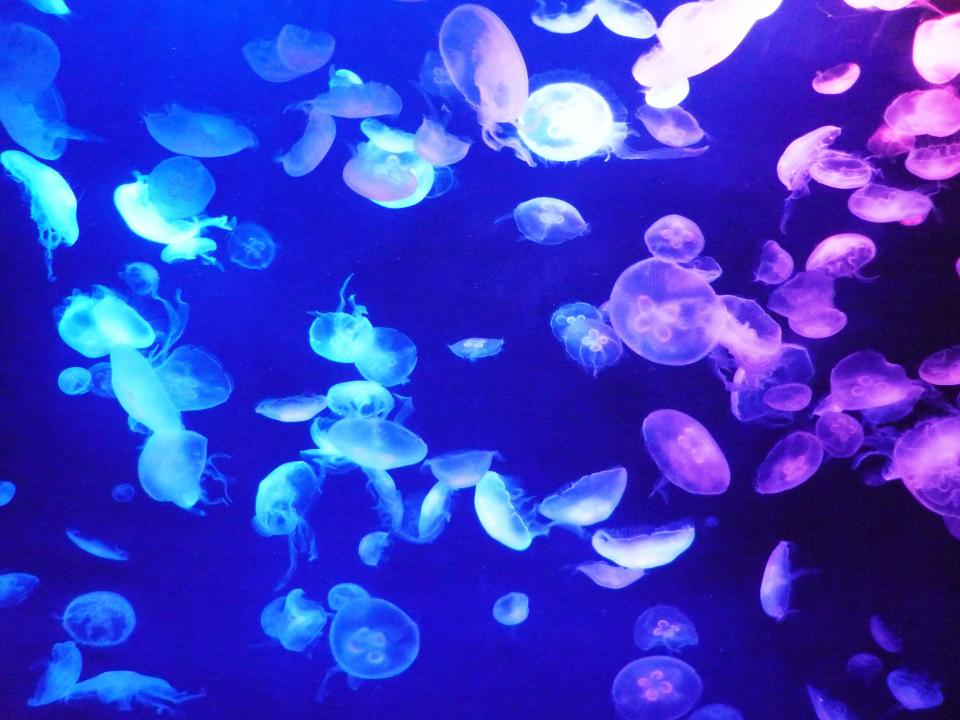
The moon jelly is the most common jellyfish in Rhode Island and is found floating in open water near the surface. These jellyfish are white with a dome shape and 4 horseshoe-shaped gonads, that can be orange or pink in appearance, visible from the top.
The good news about these guys is, according to Mystic Aquarium, their sting is mild.
Atlantic Sea Nettle
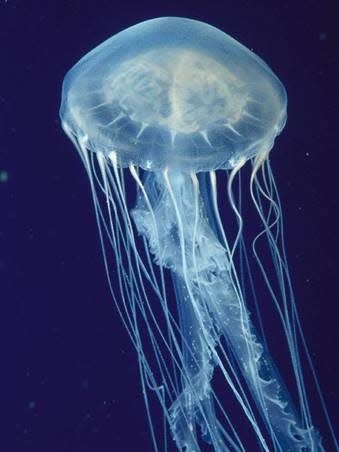
One jellyfish that does pack a powerful sting is the Atlantic Sea Nettle, with long, thin, twining tentacles trailing behind it.
This jellyfish is more often found in the South County salt ponds, such as Ninigret and Green Hill Ponds rather than the open ocean. Some years there are enough of them that The Rhode Island Department of Health (RIDOH) and the Rhode Island Department of Environmental Management (DEM) issue a warning to be careful, as their sting can cause “moderate discomfort and itching welts.”
If stung, it’s recommended to wash the area with vinegar, not fresh water.
More advice: What to do if you're stung by a sea nettle
Clinging Jellyfish
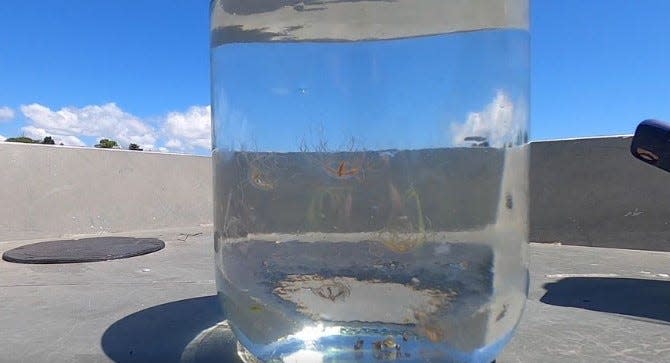
Small but mighty, this isn’t a jellyfish you want to come across.
The clinging jellyfish is about the size of a dime and are most recognizable by an orange-brown cross on their transparent body. They pack a powerful sting that has sent several Rhode Island beachgoers to the hospital.
Their preferred habitat is clinging to vegetation like eelgrass, so you’re not likely to have a run-in with one while on R.I.'s sandy beaches.
Advice: How to protect yourself from clinging jellyfish
Portuguese Man O’ War
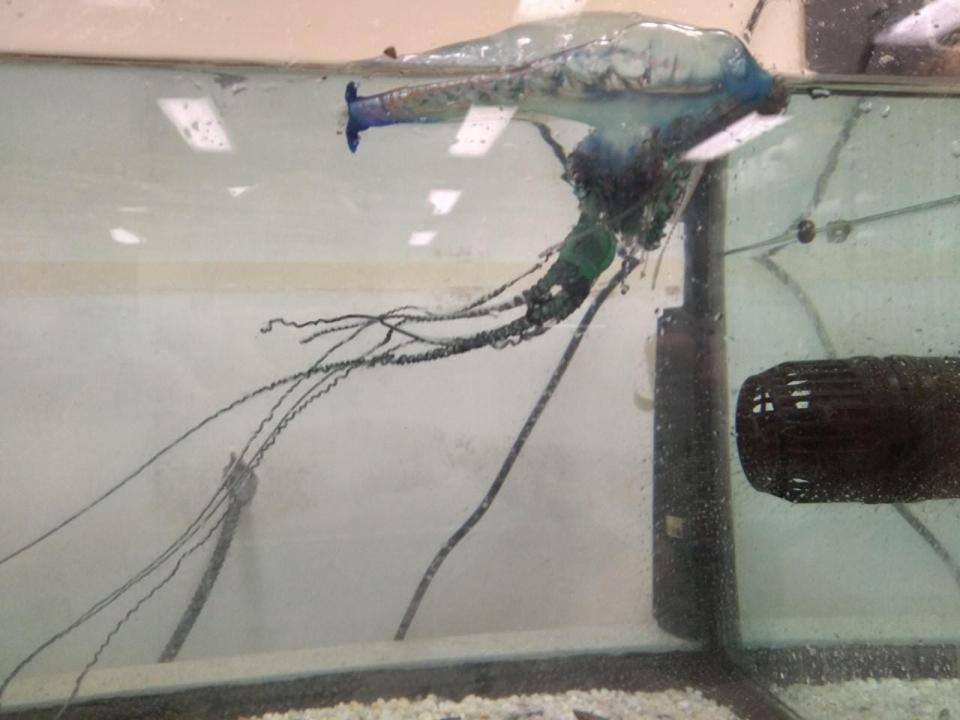
Technically not a jellyfish, the Man O’War is a group of organisms acting as one to survive. They’re named for the way their top resembles a warship at full sail. The sail, which can be blue, violet or pink, can float up to 6 inches above the water. Below are tentacles that can grow up to 100 feet.
While they aren’t typically found in abundance off of Rhode Island’s ocean beaches, sightings are reported nearly every year. If you see something that resembles a balloon floating on top of the water, stay away.
The Man O’War packs a powerful sting, capable of sending someone to the hospital. The tentacles are harmful even when they have detached from the body.
A deep dive: More to know about Portuguese men o’ war
Comb Jelly
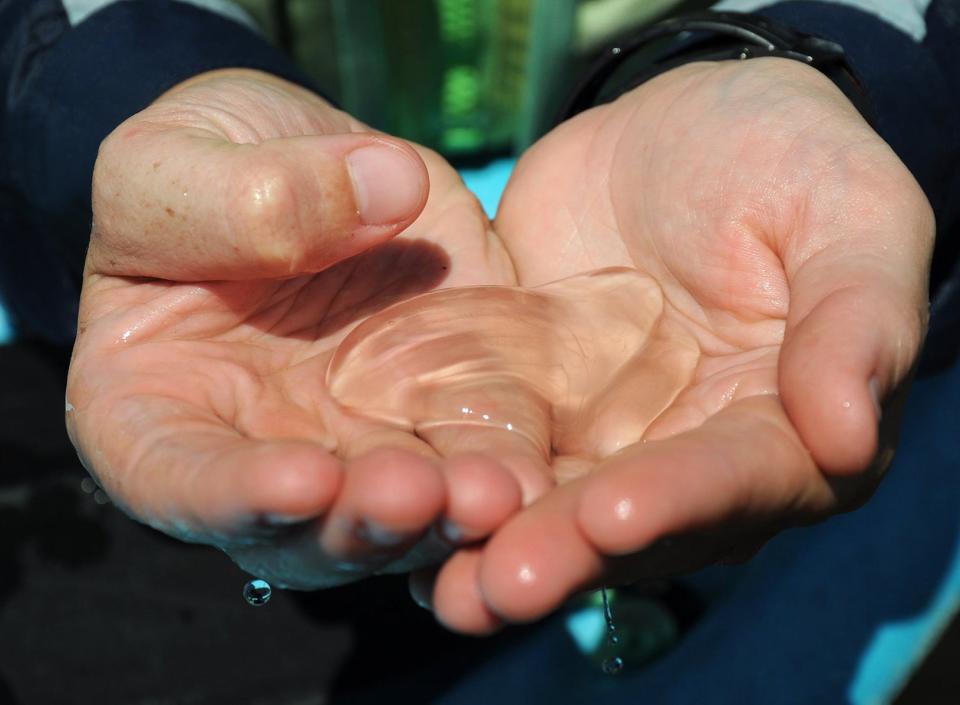
Often called a jellyfish because of its gelatinous body, the comb jellyfish is technically a ctenophore. These creatures – which grow to be 4 or 5 inches long – have no sting.
Recent studies have found the comb jellies are present in Narragansett Bay for a longer season as water temperatures have risen.
This article originally appeared on The Providence Journal: RI Jellyfish: Here's which ones are harmless and which pack a bunch with their sting

